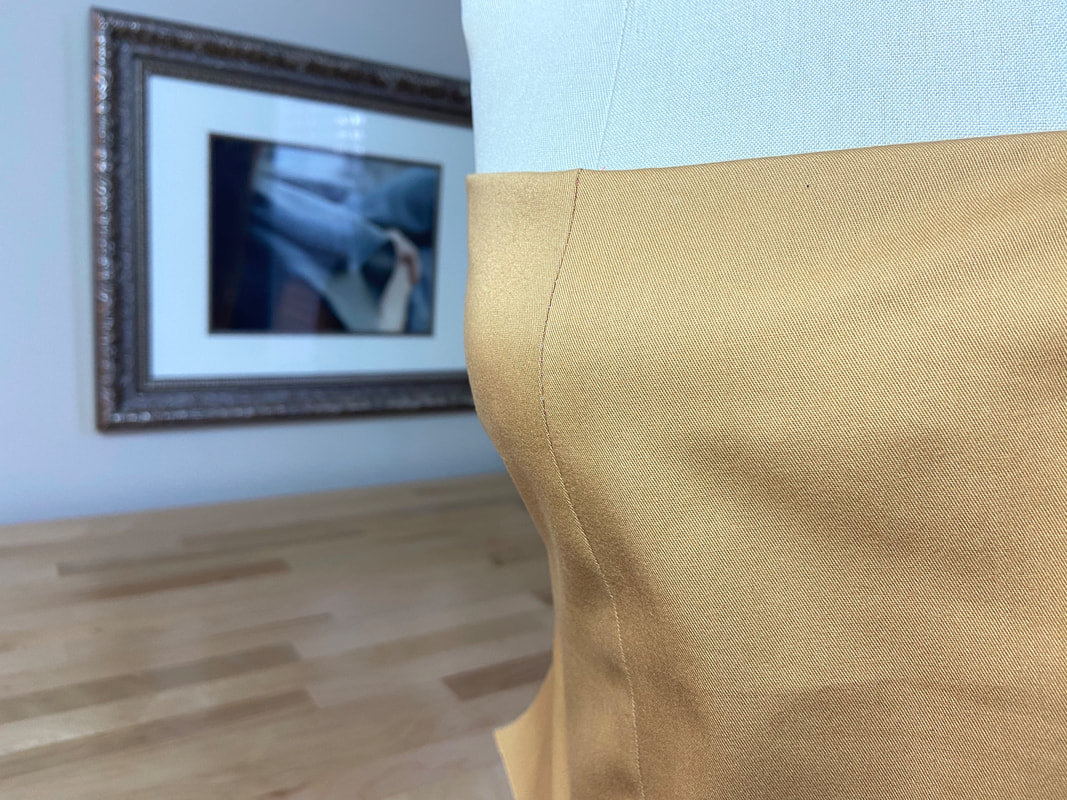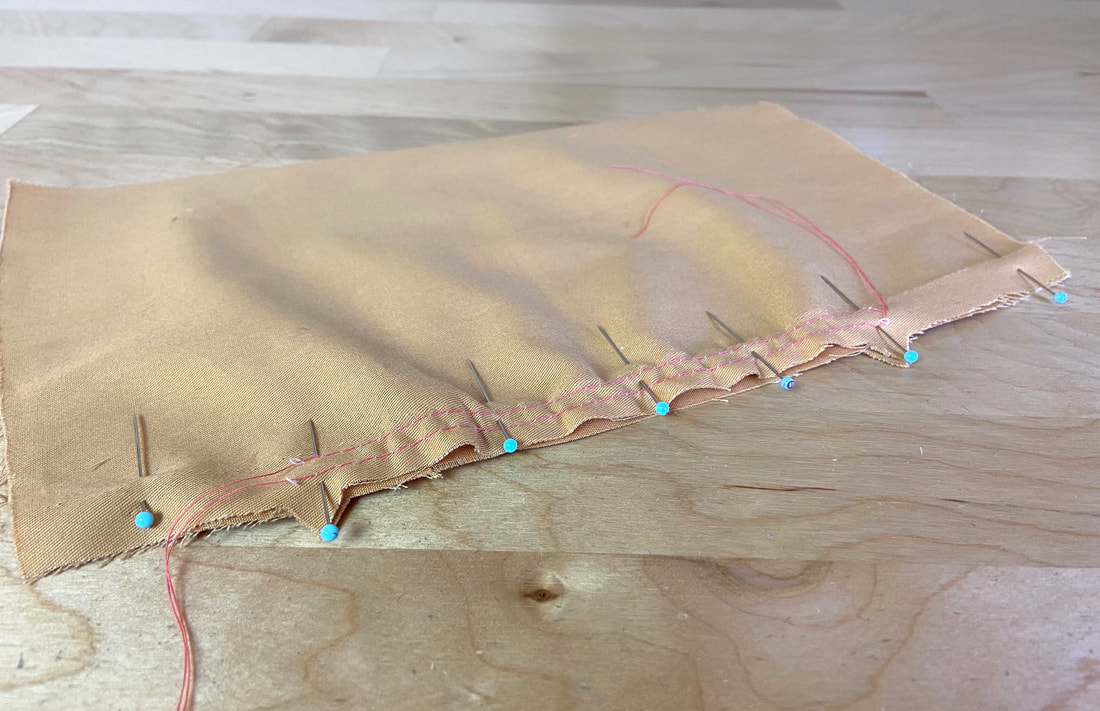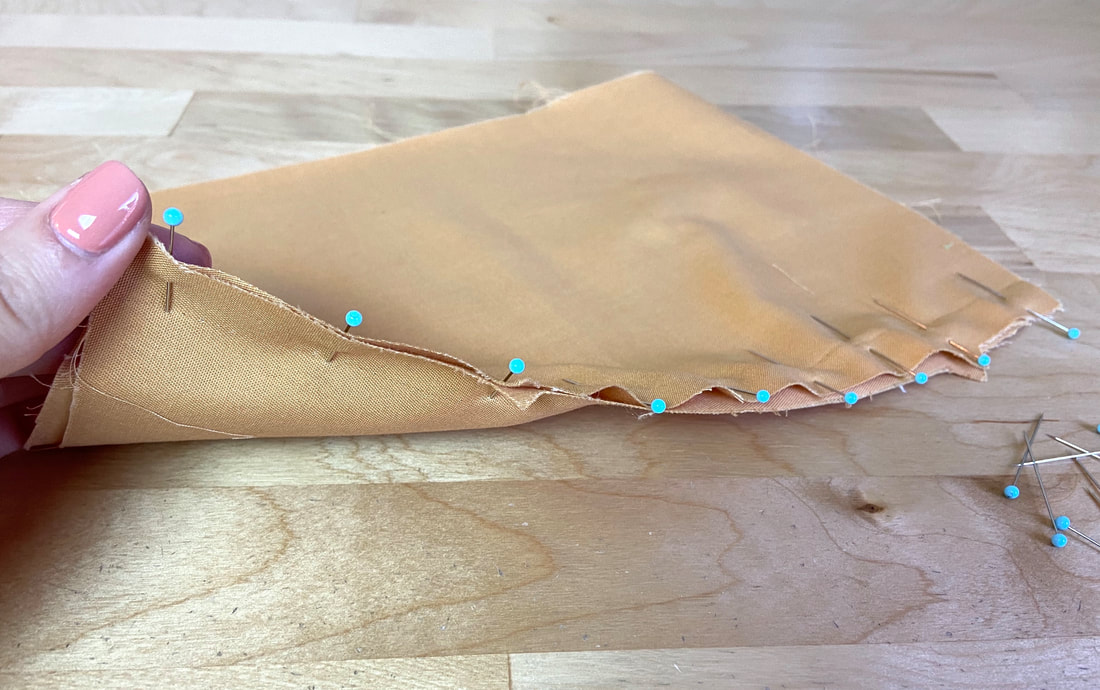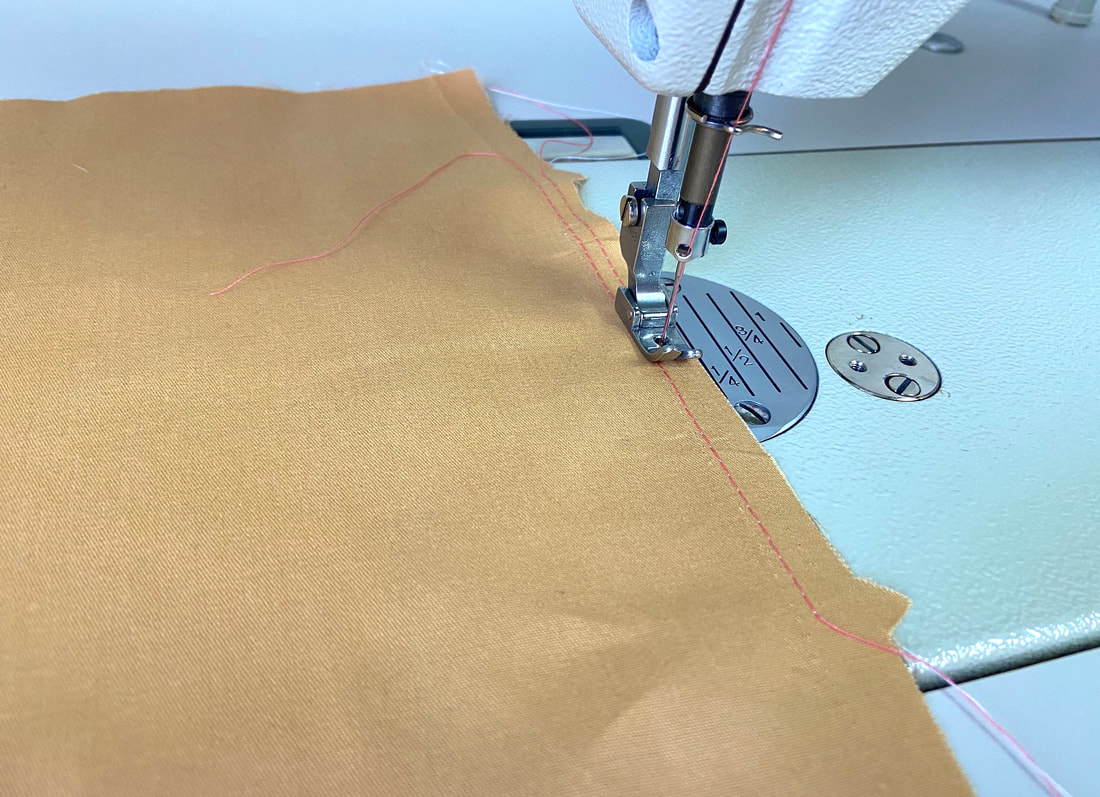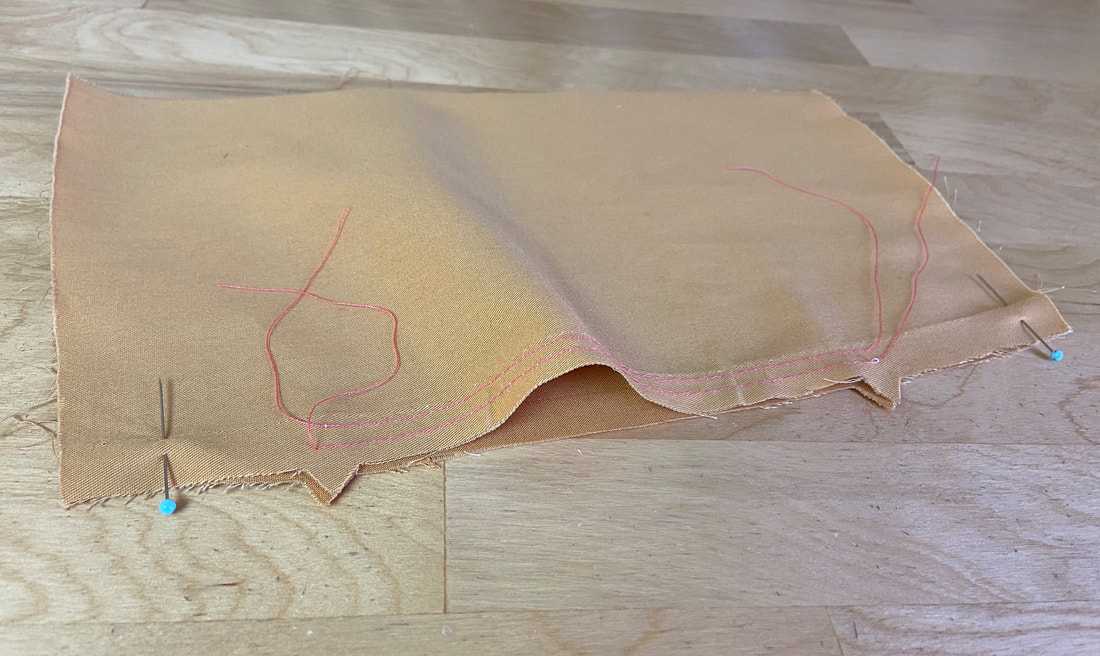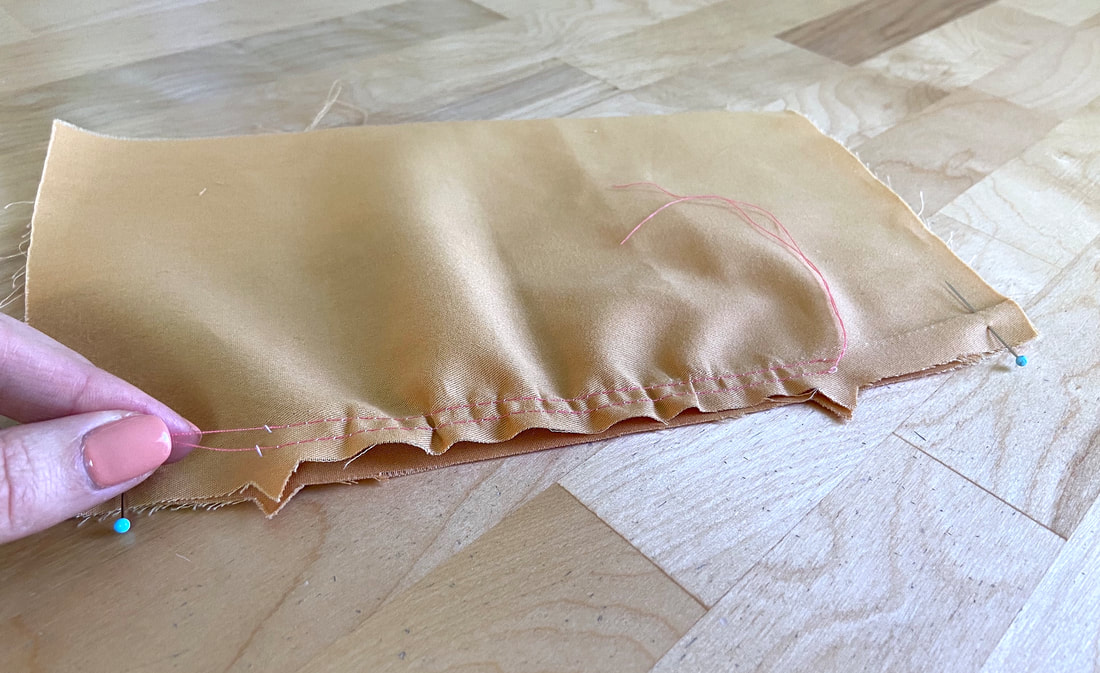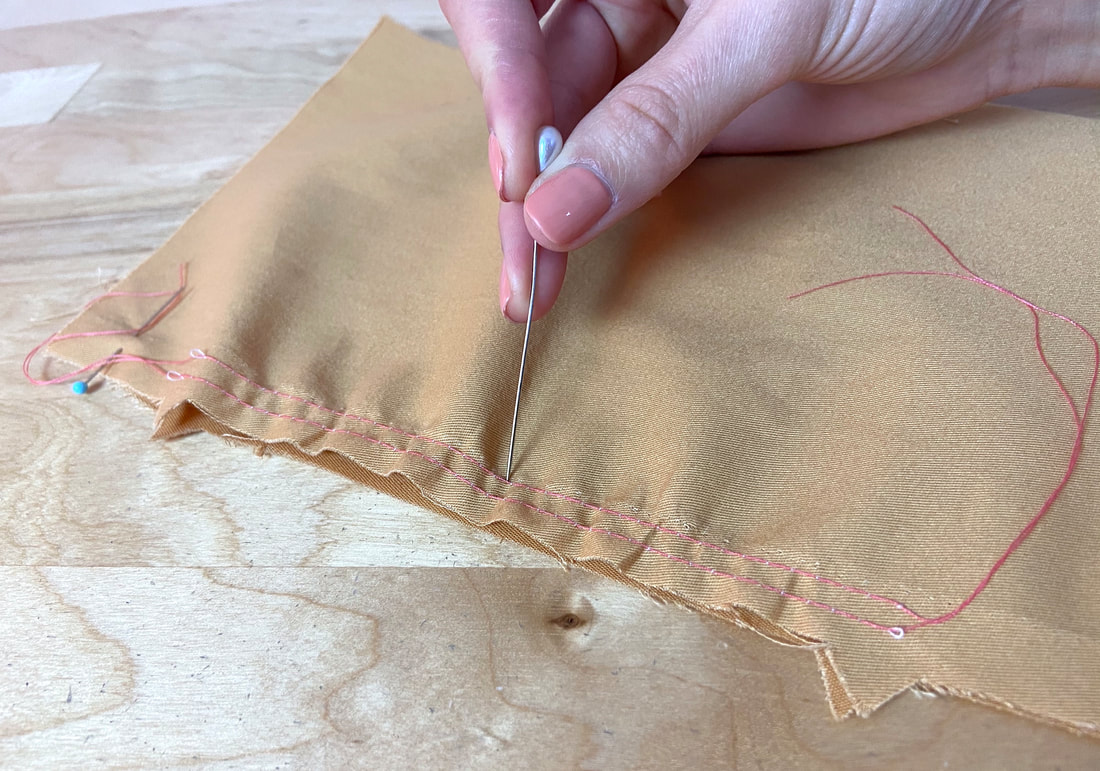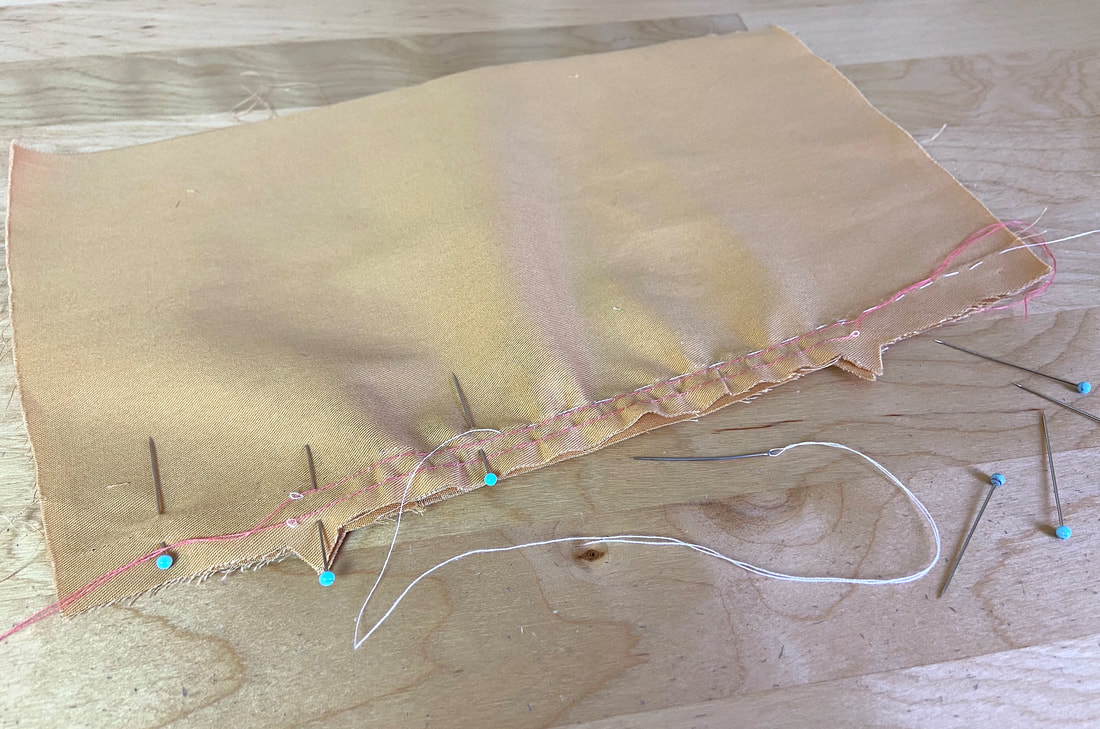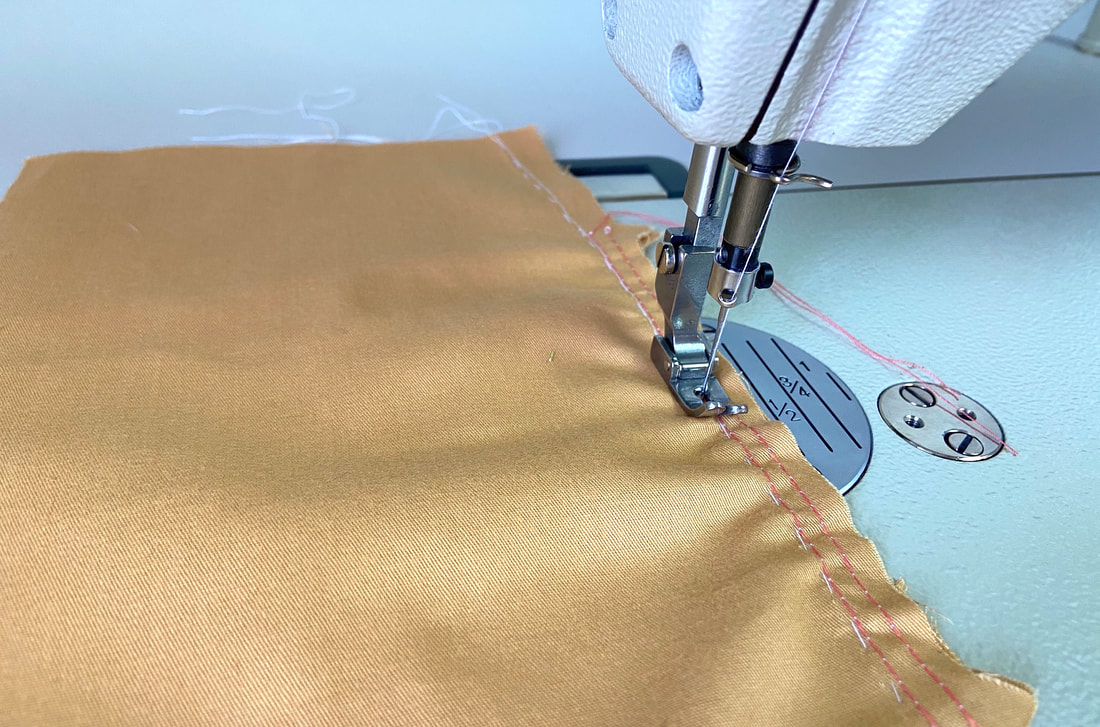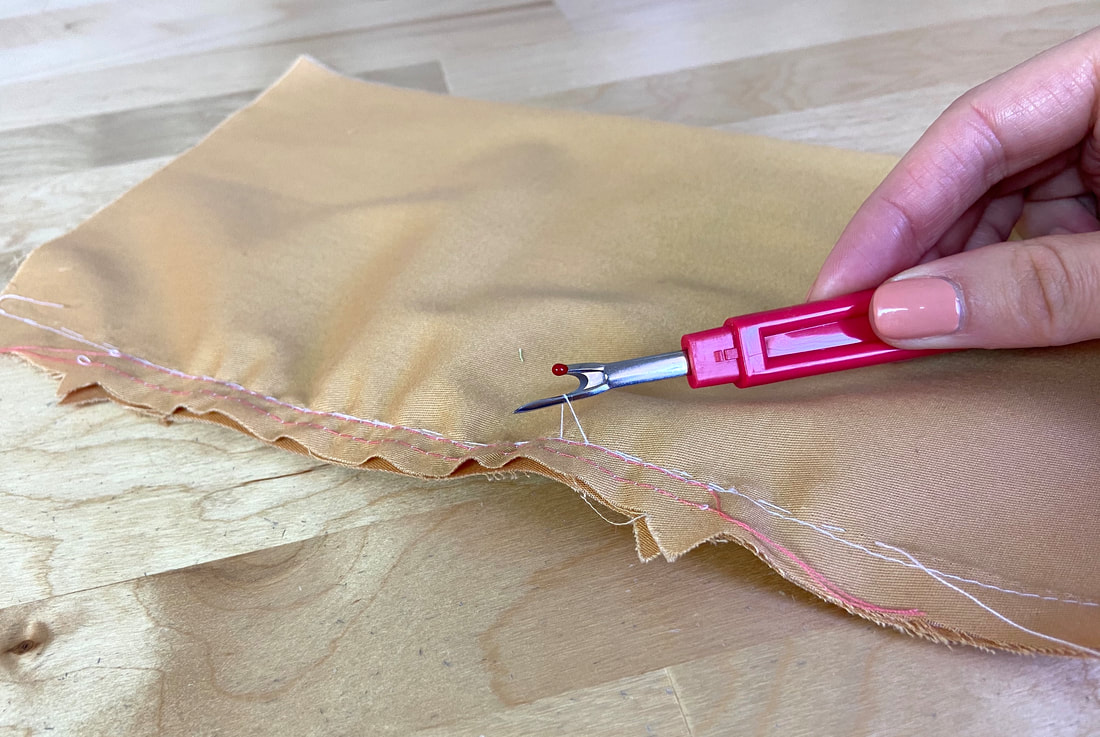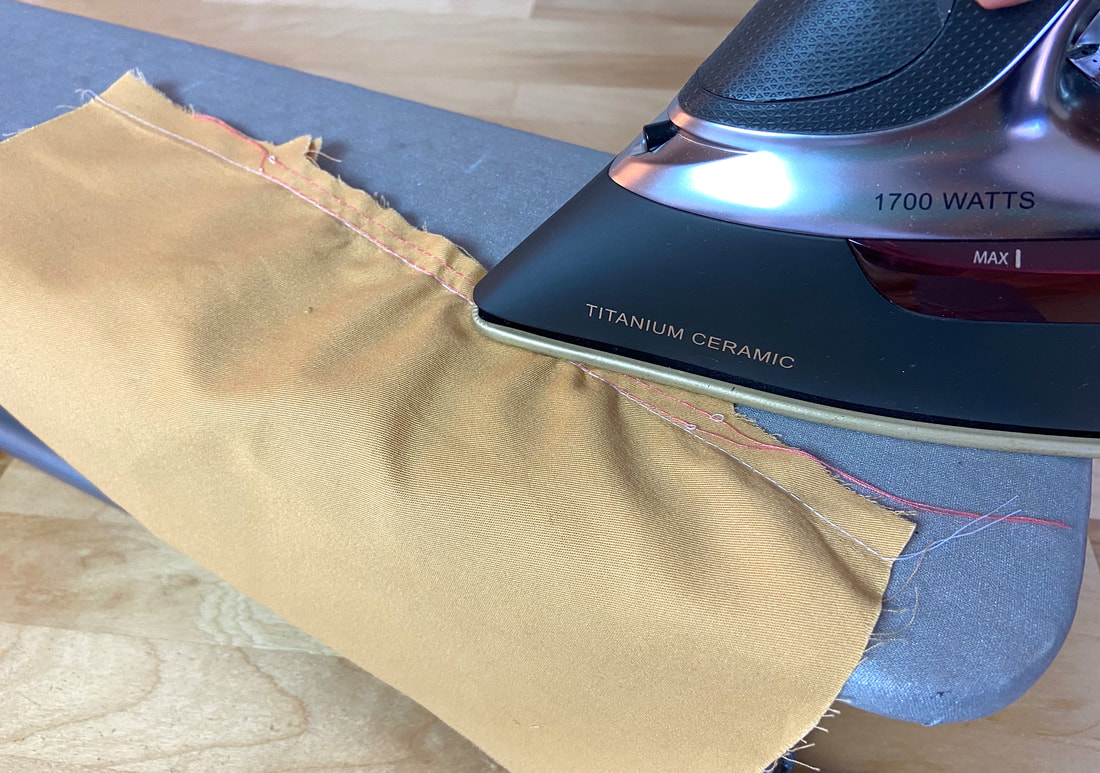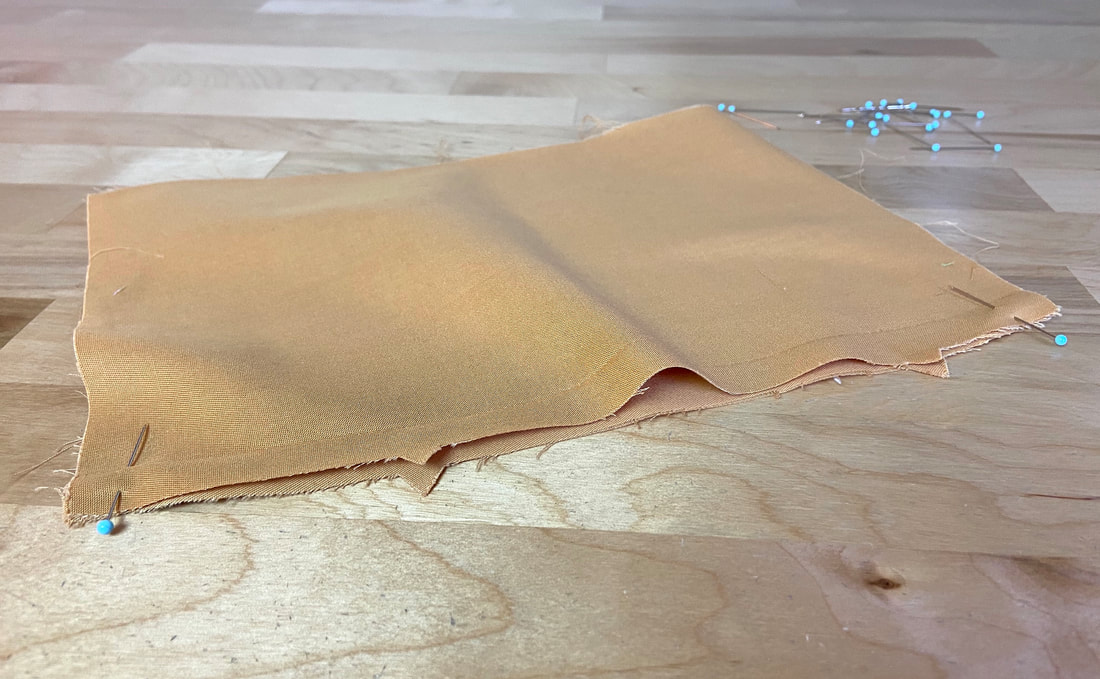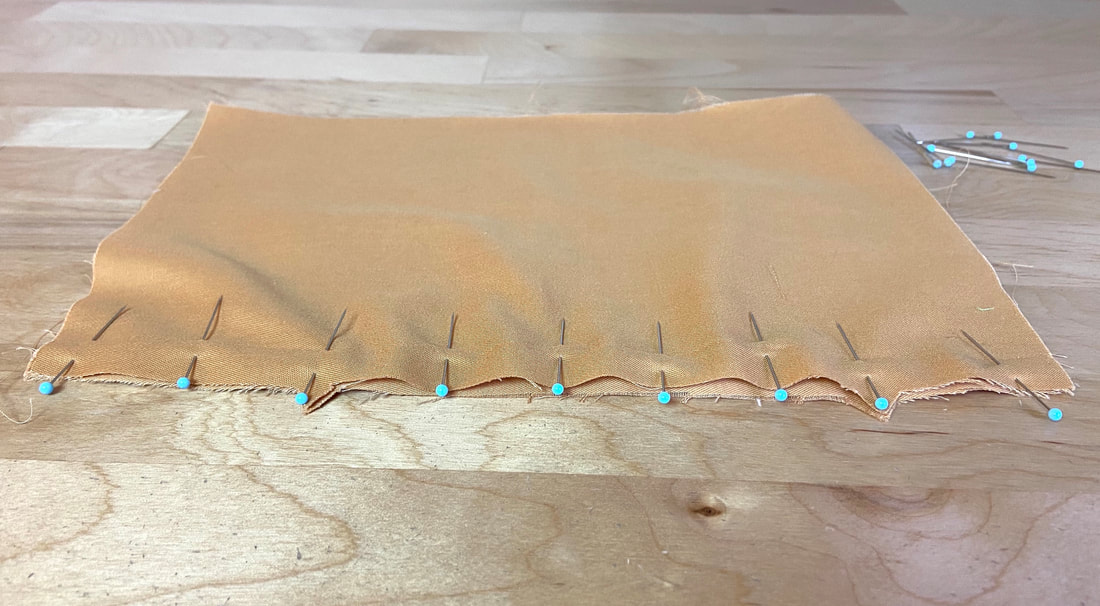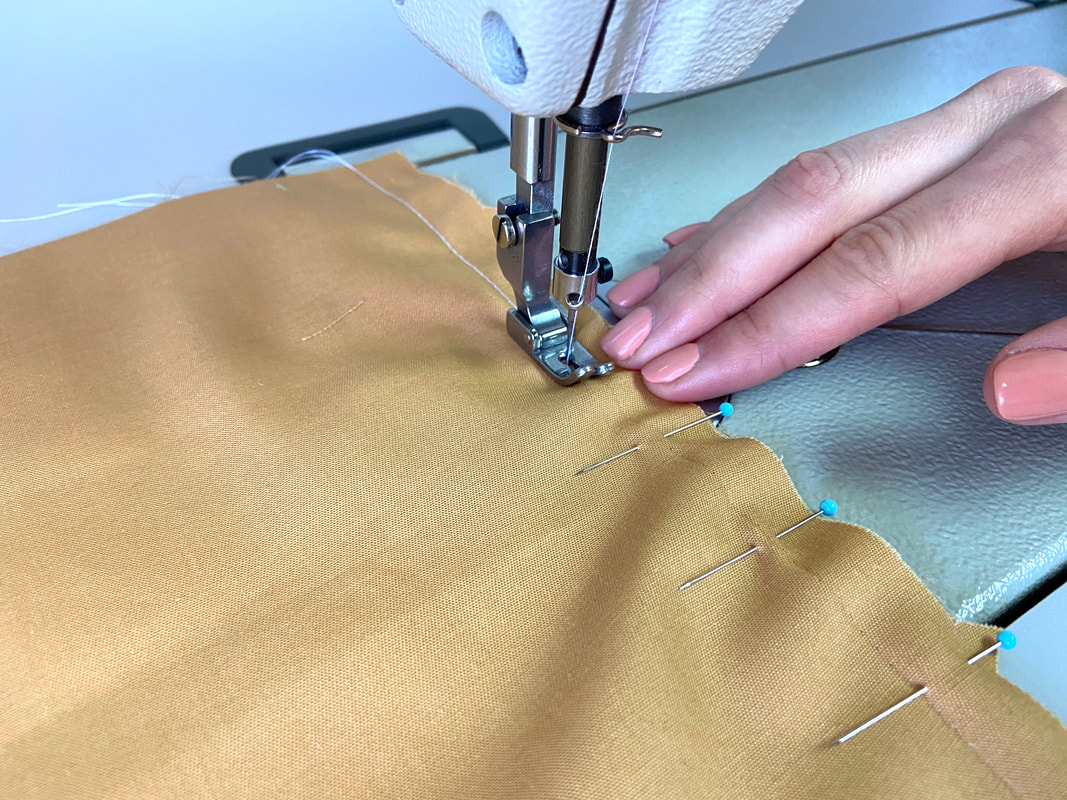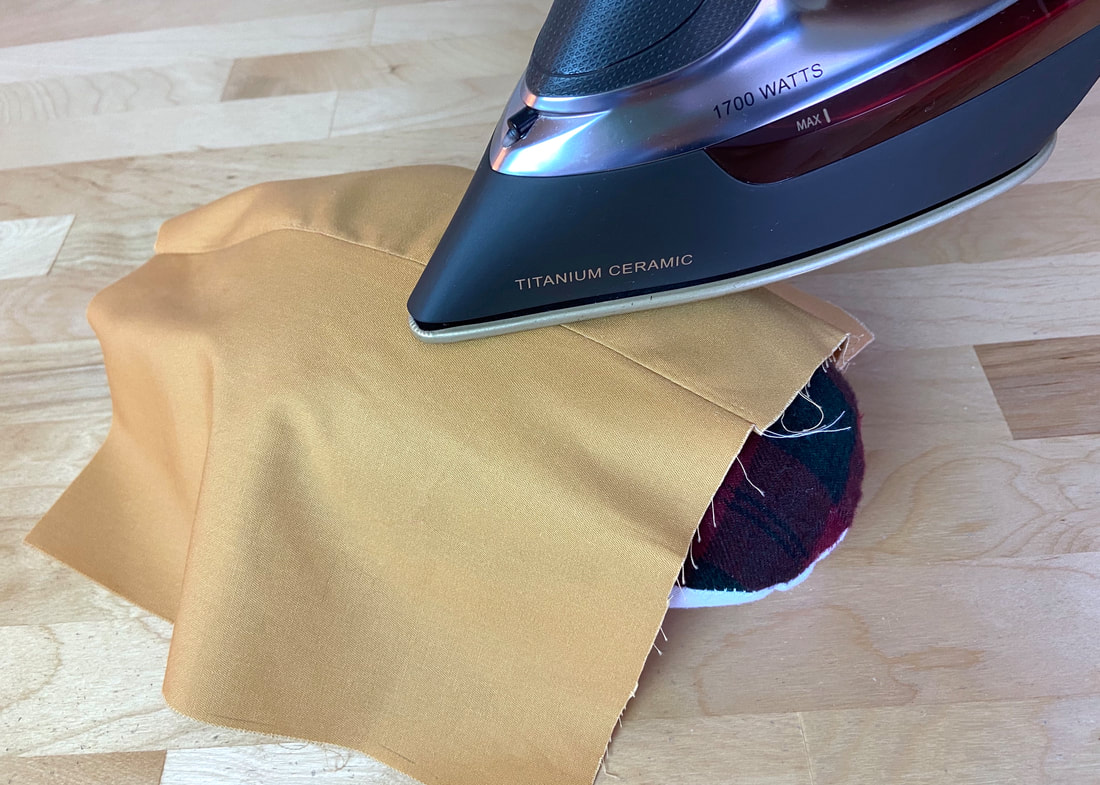Sewing a seam with ease entails sewing a larger fabric edge to a smaller edge such that the resulting seam creates fullness but does not leave puckers or folds like gathering would.
As opposed to gathering, which is visible on the face of the garment and often incorporated into its design, easing a seam is purely functional and not necessarily visible on the face of the garment. Easing makes an invaluable difference in the fit and comfort of a garment.
Easing is basically excess that is added to seams that cross over organic, round shapes on the body. The most common applications are within princess seams (at the bust area) and sleeve caps. In these instances, easing is responsible for adding fullness so that the seam can comfortably fit over the curvature of the bust and respectively, the organic shape of the upper arm.
There are two types of seams that use easing.
One requires an easestitch and some slight gathering to fit the two seam edges together.
Another uses no easestitching- the easing is simply worked into the seam by hand using densely inserted pins.
In the latter option, pins alone are used to spread out the fullness within the seam. Doing this may be difficult for sewing beginners thus easestitching is often used to aid in the construction process in both scenarios, regardless of whether you have small or moderate ease to control.
Sewing A Seam With Moderate-To-Heavy Ease
A seam that requires a large edge to be sewn to a shorter one requires the use of easestitching. You will not be able to get the two edges to perfectly align in length unless the larger one is manipulated to become smaller- this is where easestitching comes in.
Easestitching is a straight stitch applied next to the seamline of the larger seam edge. The stitch is then gently pulled and spread evenly until its length corresponds to that of the shorter edge. The end result will be a seam that is smooth yet features some 3-dimensional fullness.
1. Apply two straight stitches next to the seamline of the longer edge. These two stitches will serve as the easestitching.
The stitches should be located within the seam allowance, next to the seamline but not crossing into the face side of the garment.
Keep in mind that easestitching should be used solely in the construction process and not visible on the face of the garment.
Leave enough loose thread at the end of each stitch so that they are easy to pull and gather.
While a longer stitch length will provide an easier way to gather the fabric, use a regular-length stitch for thin, lightweight fabrics (as long as the bobbin thread can be easily pulled to gather the edge). A smaller gathering stitch will always provide more control.
2. Next, match the short edge to the easestitched long edge at the top and bottom first. Insert a pin at each end, perpendicular to the edges. The length of the fabric edges will not match at the point.
3. Grab the loose threads on one end of the easestitching (applied in Step 1) and gently pull, spreading the fullness evenly throughout, until the longer edge matches the shorter seam edge in length.
It helps to use the blunt end of a needle or a pin to gently spread the gathers.
4. Once both edges match in length, insert pins perpendicularly to keep the two fabric edges perfectly aligned.
5. Consider hand basting the two layers together for extra stability.
6. Next, carefully machine stitch the seam with the eased layer facing up. As you stitch, be careful not to pucker or fold the gathered edge underneath. The seam should remain smooth but maintain a certain amount of fullness.
Remove any hand basting stitches at this point.
7. Iron the stitching in the direction it was applied, then finish and iron the seam allowance as specified in your project. In this example, the seam allowance edges are ironed open.
Sewing Seams With Slight Ease
If the seam requires a very small amount ease, meaning the two edges are close to the same length but just slightly off, you can use pins alone to align the eased edge in place. Keep in mind that the pins have to be applied perpendicular to the two fabric edges or they will not hold the layers together properly.
1. First, match the top and bottom ends of the two seam edges and insert pins perpendicularly through both fabric layers at these two points. Always keep the longer edge on top in the alignment/pinning process.
2. With your fingers, work the longer edge such that its ease is evenly distributed to match the smaller edge underneath. Insert pins perpendicular to the edges, spreading the fullness evenly throughout. Each mound of fullness should be visually equal in shape and length from pin to pin.
3. Keeping the longer seam edge on top, machine stitch carefully. Apply some pressure with your fingers and readjust the fullness as needed to achieve a smooth seam. Remove each pin as you approach it. Do not sew through the pins.
Stitching a seam with fullness without the help of easestitching can be tricky for beginners and requires a lot of practice. If you find it difficult to use pins alone to hold the two fabric layers together, introduce easestitching as described above.
4. Once complete, iron the finished seam over a tailor's ham and apply the seam allowance finish of our choice (or as specified in your project).
As opposed to the seam with moderate-to-heavy ease described above, this finish will be very subtle with the fullness almost invisible to the naked eye. It is during wear when this slight easing makes the most difference in the garment's fit and comfort.

